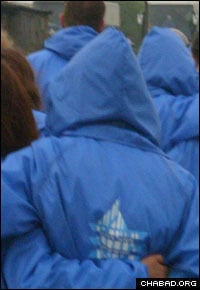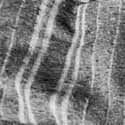Editor's Note: Rabbi Yossi Lew, assistant rabbi of Chabad-Lubavitch of Georgia, accompanied the Atlanta delegation on this year's March of the Living, a tour of Jewish communities and concentration camps in Poland, followed by a week in Israel, for high school students. As he's done in year's past, Lew provided rabbinical guidance on the trip. He wrote a diary about his experiences and those on his bus, as they came to terms with the horrible reality that was the Holocaust. This is the second of several installments.
May 1, The Killing Grounds of Birkenau
Have you cried lately?
When was the last time you cried? I mean really cried. You know, the soaking wet, sobbing kind that leaves you exhausted when you're done.
It happened to my students today at Auschwitz.
While we actually began our day there, we did not stay for long. Today, we did what the inmates could not do: March out.
All in all, about 18,000 March of the Living participants marched out of the compound, through the streets and right up the road to Birkenau, the largest murder field in the world, saturated with the blood and ashes of our slaughtered brothers and sisters.
What an awful place this is.
We went to the barrack where the notorious doctor, Joseph Mengele, held his captives, young twins between the ages of 2 and 16. Helpless and naïve, without their mothers, they were injured, tortured, maimed, scared and eventually murdered for Mengele's brand of "medical" experimentation. How brutally hideous; how notoriously evil.
We lit candles that the students arranged into a Star of David. It brought a little light in a place that had never seen light.
Then, we went to a women's barrack. Someone produced an Israeli flag and draped it on one of the shelves designed to hold inmates. On it, we placed a Torah scroll and read this week's Torah portion from it. Afterward, we prayed the afternoon service.
It was unbelievable. I am not sure how much light was introduced into that barrack, but I am sure that much light was introduced into our hearts.
No one was crying when we left that barrack.
May 2, Auschwitz Revisited

Lunch? Yes, we are eating right here. But we are uneasy and uncomfortable. Someone just said that she is nauseated.
When you are sitting on the vast lawn just outside of Auschwitz, things are different. Isn't it sacrilege, a violation, a desecration to eat here? We've just left Auschwitz's gas chamber and crematorium. How can we eat?
Auschwitz is tough. The evidence is presented so clearly: The shoes, suitcases, brushes, pots, artificial limbs, human hair, and talleisim have a way of staring back at you and eating at your very being.
One student's grandfather was forced to work at the camp's hospital. Having access to medicine saved his life, and he valiantly saved others with it as well. This giant of a hero is, thank G‑d, still alive today. We entered that hospital building, and the granddaughter's life will never be the same. Neither will her relationship with her grandfather. Some of his medicine seems to be flowing through her.
Few words can describe the gas chamber. Darkness screams from every corner; evil lurks everywhere. The mouths of the crematorium ovens, right next to the gas chamber, are eternally open. They must be crying with burning shame and disgust at how they accepted the bodies of murdered Jews, consuming them in their bellies.
Eating is destroying. Food is broken down inside a digestive system, and is completely destroyed. Of course, destruction takes place only after releasing the energy, after nutrients are utilized.
It is hard, if not impossible, to find anything more destructive than the Holocaust, expressed so wholly and painfully by Auschwitz. Upon leaving that place, though, it is important to extract something positive from the painful and destructive energy.
Many students on our bus utilized their moments to pledge a more solid commitment to their Judaism.
We were all helped by moving on to the venerable and beautiful city of Krakow. The Jewish section of that city contains seven synagogues, and so much Jewish energy. Despite the emptiness of Jewish life, there is still so much remaining. There are, in fact, two synagogues still functioning, the Rema synagogue – one of the most moving in town, it was the seat of some of our history's greatest sages and Torah giants – and the 350-year-old Isaac synagogue, which has recently become the official Chabad-Lubavitch center. Visiting, praying and celebrating in those buildings was precisely the extraction of positive energy we needed.
We all need to eat. We cannot exist without eating, without taking something positive out of destruction. Even in Auschwitz, we need to eat. Imagine what the inmates would have given to eat but one good meal.
We entered into the building commemorating Polish political prisoners. There we found a survivor who was standing under her picture taken at liberation. This amazing woman, a smile constantly on her face, was from a small town in Poland, and was in Auschwitz for a short time, until liberation.
I asked how it was possible for a young girl to be accepted into Auschwitz, and how she managed to survive. She responded, in Yiddish: Es Zainen Geven Nissim Venifluos. There were miracles and wonders.








Start a Discussion